
views
X
Research source
With a balanced diet of greens, protein and commercial food, your red-eared slider turtle can grow to a healthy 12 in (0.30 m) adult size, and live longer than 20 years!
Choosing the Right Foods
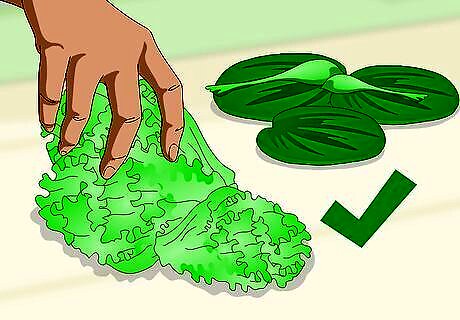
Pick high-calcium vegetables and water plants for your turtle's diet. Vegetables and plants high in calcium can help prevent metabolic bone diseases, which can cause a softened shell or weak limbs. Red or green leaf lettuce, dandelion leaves, and water plants like water lilies are good choices.
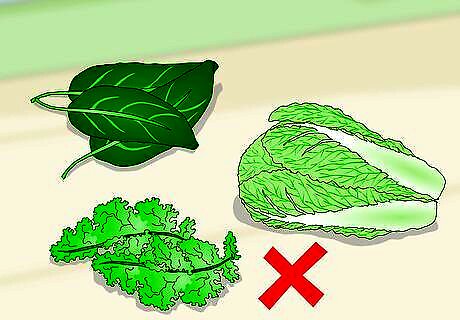
Avoid spinach, kale, and cabbage. Foods that are high in phosphorus and low in calcium are not the best kinds of vegetables for your turtle's health. Calcium is an important part of your turtle's diet, and the high phosphorus content can block its absorption of calcium.
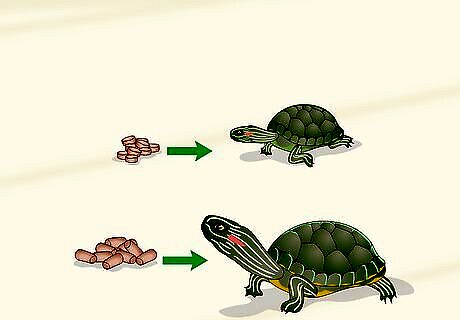
Choose small pellets for young baby turtles and large pellets for adult turtles. Pellet foods come in a variety of sizes from small to large. Small pellets sink to the bottom of your tank and work well for small or juvenile turtles. Larger pellets tend to float at the top of your tank and will attract large turtles. Pick turtle food that has low protein and low fat for a balanced diet.

Select live protein like feeder fish, crickets, or worms. Red-eared slider turtles are omnivores, so they need both animal protein and plant matter. Crickets, worms, and small fish like guppies or minnows are good choices for protein. You can buy them frozen or freeze-dried to reduce costs. Feed your turtle live fish every once in a while. The act of chasing and catching its food will exercise your turtle and provide mental stimulation.
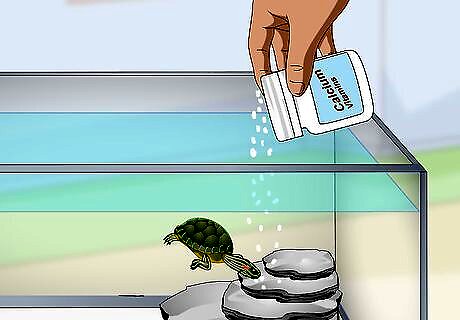
Supplement your turtle's diet with reptile calcium vitamins. Even with a balanced diet and plenty of sunshine, your turtle may still need a boost of calcium to stay healthy. Reptile calcium usually comes in a powder form that your turtle will eat in its tank.
Offering the Right Amounts
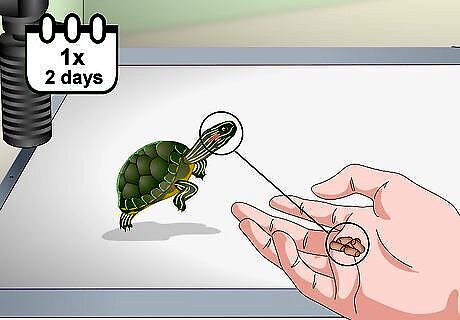
Serve your adult turtle a pellet portion the size of its head every other day. Since the quantity of food will vary based on your turtle's age and growth, a good rule of thumb is to shake out a portion of pellets into your hand and make sure it's slightly smaller than your turtle's head, not including its neck. If your turtle is leaving a lot of pellets leftover after every daily feeding, reduce the number of pellets for its next meal.
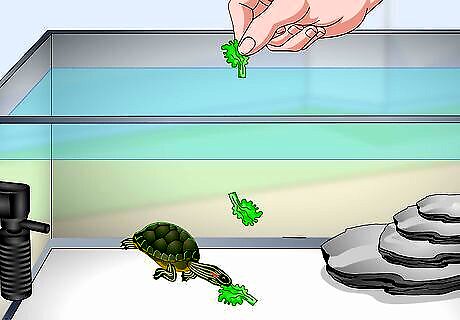
Give your adult turtle plants and protein on days it does not eat pellets. Feed your turtle 1 to 3 pieces of leafy greens and 1 to 2 pieces of protein on these days. If your turtle is gobbling up all its food at every feeding, slightly increase the portion with 1 to 2 more pieces of vegetables or protein. If your turtle doesn't finish its vegetables, remove them from its tank after a day so it doesn't get slimy. Cut down on its next portion of vegetables, like breaking a lettuce leaf in half, to see if your turtle finishes it more quickly.
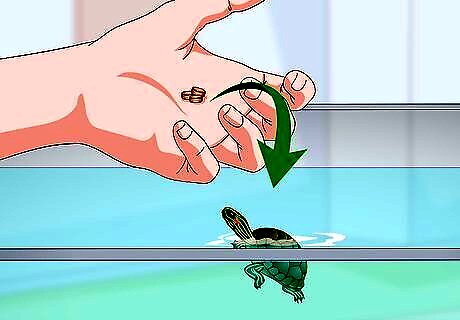
Feed babies protein and pellets daily until they're grown. Give your baby turtle a daily portion of pellets slightly smaller than its head every day, along with a small serving of protein. When they reach adulthood at around 5 to 7 years old, their diet can include more vegetables and less protein. For example, feed your baby turtle a portion of pellets once a day along with 1 to 2 guppies or worms.
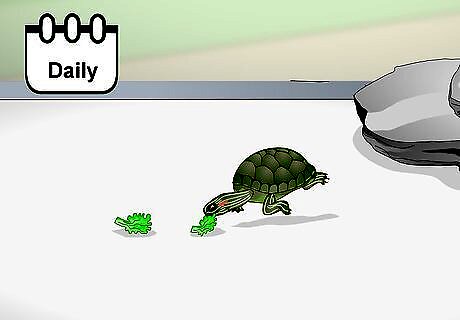
Provide your baby turtle with 1 to 2 leafy greens daily. Young red-eared slider turtles may not show interest in vegetables, but you should introduce them to their diet early. Lettuce, dandelion plants, and water lilies are safe to give your young turtle every day along with its protein and pellets.
Creating Good Feeding Habits

Feed your turtle in a separate tank to keep their main tank clean. By moving your turtle to a smaller, separate aquarium filled with water, their main tank can be kept free of food particles and waste. Be sure the second tank can hold 50–120 US gal (190–450 L) of water, so your turtle can comfortably swim and eat in it If you feed your turtle in its main tank, keep its water clean. Turtles are quite messy, and their waste is more solid than the waste of other aquatic pets, like fish, so good filtration is a must. Keep your turtle's tank clean with a filter system and change the water completely every 2 to 3 weeks.
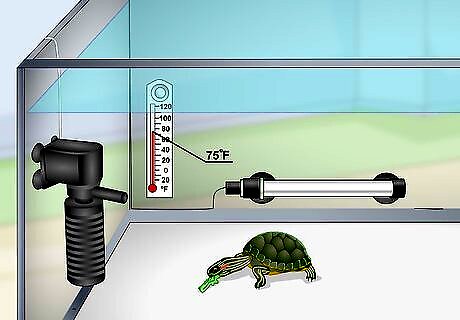
Keep the tank water at around 75 °F (24 °C) so your turtle can eat comfortably. Temperature is very important for all reptiles. A red-eared slider turtle may refuse to eat if its tank water is too cold for its liking. Your turtle's appetite might decrease, along with its activity. An aquarium thermometer can help you monitor your turtle's tank.
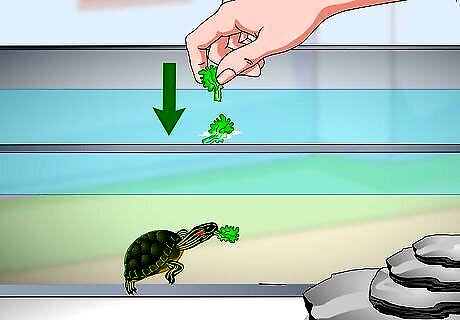
Drop food into your turtle's tank to feed it. Since red-eared slider turtles are aquatic turtles, they eat and swallow with their heads underwater. (In comparison, land turtles or tortoises are herbivores and eat on the ground.) Gently drop your turtle's food into their tank, and they'll happily eat and digest it there.











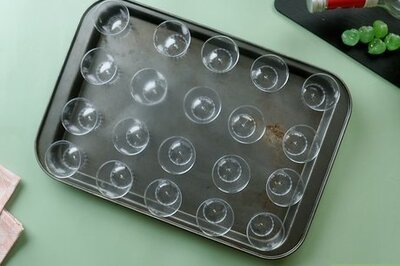



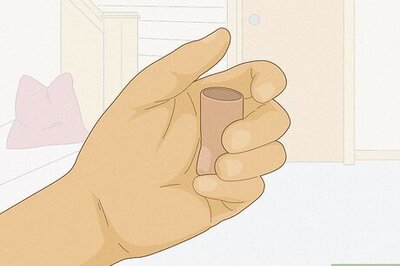


Comments
0 comment